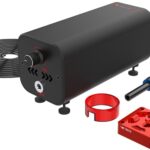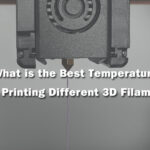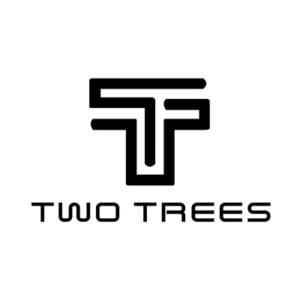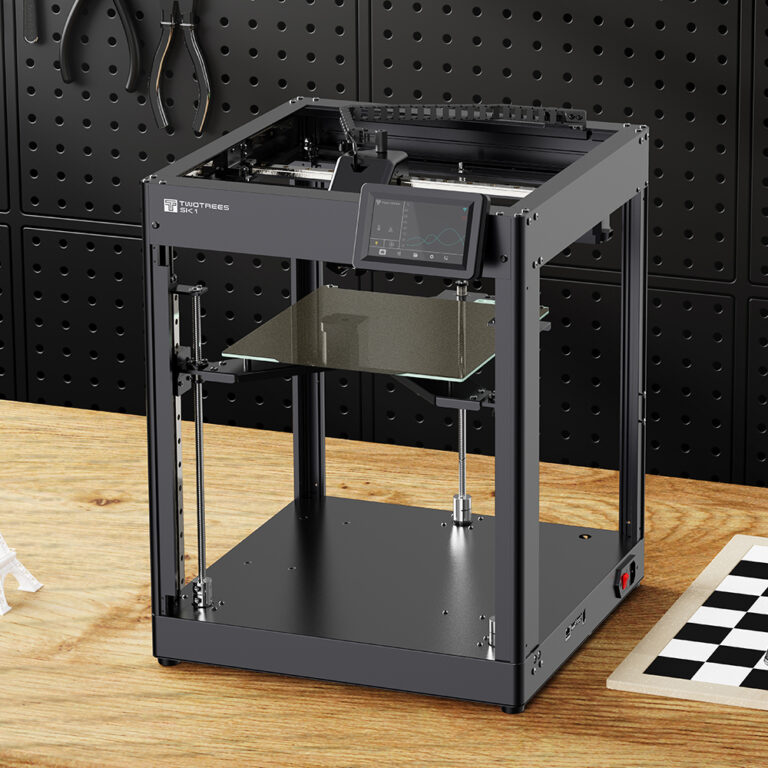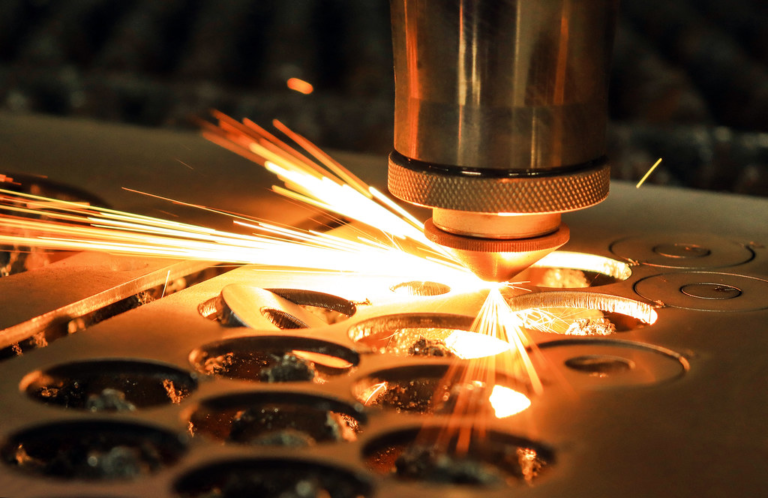If a 3D printer is a can, filaments are the fuel. 3D printer filaments are the materials you use to 3D print different objects. There are many kinds of 3D printing materials with variable properties and applications.
Before you step into the world of 3D printing, learning the basics of 3D printing filaments is crucial. There are different materials for making all sorts of things. Also, not all 3D printers can print using every type of filament. So, knowledge regarding filaments is of utmost importance before investing in a 3D printer. And this 3D printer filament guide is here to provide the necessary information you might need on the topic.
What is 3D Printer Filament? What Do I Need Them For?
3D printer filaments are print materials that 3D printers use to print various objects. They are mainly thermoplastics, which melt instead of burning when heated. The melted filament can be extruded through a nozzle onto a flat surface known as the print bed. There are also other 3d printing filament types besides thermoplastics like powders.
Usually, there is one extruder in a 3D printer; but 3D printers with multiple extruders aren’t uncommon. The purpose of multiple filaments is to put different colors together into a single object. 3D printing filament is available in spools by weight from half a kilogram to 2 kilograms or more. The thickness of the filaments is also variable, like 1.75 millimeters, 3 millimeters, etc.
3D Printing Filaments Types
There are lots of 3d printing filaments and learning about all types of 3d printer filaments is not possible for one person. Only a handful of them is commonly used. As each of them is more or less unique, it is important that you know them. Here are some basic 3D printer filaments types:
-
PLA
PLA or polylactic acid is an extensively used 3D printer filament. It has impressive strength with moderate flexibility and durability. PLA is straightforward to use. It’s the best 3D printing filament for beginners. It has a low printing temperature and doesn’t usually require a heated bed. It also does not emit a lousy odor, unlike ABS during printing.
PLA is available in a wide range of colors and styles around you. You can quickly get a spool of PLA filament no matter where you are. It is very environmentally friendly, so if you are worried about our green Planet, you shouldn’t use PLA as your 3D printing material.
-
Nylon
Nylon is a member of the family of synthetic polymers. It’s the most common material in powder bed fusion 3D printing. Nylon reigns supreme where strength, durability, and flexibility matter. Although it’s slightly tricky to use, it is unparalleled in specific applications.
Nylon has a unique property; you can dye it before or after printing. You can apply colorful options when printing with nylon. However, nylon Absorbs moisture, so dimensional instability can be an issue. So, store nylon prints in a cool, dry environment to maintain a tiptop condition.
-
ABS
ABS is almost equally popular with PLA. ABS is the short form of acrylonitrile butadiene styrene. Although PLA seems to beat styrene in popularity, ABS goes toe to toe with PLA in mechanical properties. ABS is slightly difficult to use compared to PLA when it comes to printing difficulty.
ABS is commonly used in injection molding and is widely used to make many household materials, consumer goods, toys, etc. ABS products have high ductility and can withstand high temperatures. The high printing temperature can result in warping or even hazardous fumes, so users should keep that in mind.
-
PETG
Polyethylene terephthalate or PET is a very commonly used plastic globally. PETG is a variant of PET as it is rarely used in 3D printing. It has high strength, high elasticity, and medium flexibility. It is also effortless to use as bed temperature is relatively low, and there is minimal shrinkage and warping.
PETG is less brittle and easy to use. That’s why it’s often considered a middle ground between ABS and PLA 3D printing filaments. PETG is more flexible than PLA and easier to use compared to ABS. PETG Absorbs water like nylon, so you should maintain it accordingly. PETG is also quite prone to scratch marks.
-
TPE
TPE is plastic with a rubber-like quality which makes them flexible and durable. A thermoplastic elastomer is widely used to 3D print automotive parts, household appliances, medical supplies, etc. It has medium strength, high flexibility, and durability.
TPE is soft and stretchable and can withstand heavy punishments. Mechanically TPE is way superior to ABS or PLA. However, printing with TPE is also a bit difficult. TPU or thermoplastic polyurethane is a variant of TPE, which is more rigid and makes it easier to print.
-
Polycarbonate
Polycarbonate is one of the most robust 3D printing materials in the world. It is very resistant to both physical impact and temperature. Polycarbonate prints can withstand temperatures up to 110°C. It Absorbs moisture, so it should be maintained like PETG, nylon, etc.
3D Filaments Differences & Comparison Chart
You already know that all 3D printer filaments have their own unique applications. So, here we are providing a 3D printing filament comparison chart that compares the most popularly used filaments.
| 3D printing filament | Bed temperature | Bed adhesion | Extruder temperature | Properties | Applications |
| PLA |
25-55°C
|
Blue painters’ tape |
210°C
|
Stiff but brittle material | Best for cosmetic prints, toys, and various prototypes
Best for beginners |
| nylon |
245-280°C
|
PVA based glue stick |
250°C
|
Impact-resistant, good strength, high abrasion resistant | Best for making moving parts |
| ABS |
90°C
|
Kapton tape or hairspray |
230°C
|
Robust, tensile, wear-resistant, heat tolerant | Best for making interlocking parts like gears, car cup holders, prototypes, etc. |
| PETG |
70-80°C
|
Blue painters’ tape |
245°C
|
Durable, flexible, glossy finish, heat and impact resistant | Best for making mechanical parts |
| TPE |
50°C
|
Blue painters’ tape |
230°C
|
Rubbery, elastic, impact-resistant | Best for belts, stoppers, phone cases, etc. |
| polycarbonate |
130°C
|
hairspray |
290°C
|
Heat resistant, impact resistant | Best for making RC parts, drone parts |
How to Pick The Right 3D Printer Filament?
There are plenty of things to consider before settling on a printer filament. Some of them are obvious and some of them are not so much. So, here are some basic things you should keep in mind before shopping for filaments.
Printer Compatibility: First consider which filaments are supported by your 3D printer. Your 3D printer type or model might not support or even work well with the filament of your choice. So, it is best to contact your printer’s brand, the 3D printing filament brands or maybe someone who is experienced with the brand before picking a filament.
Use: Different filaments are used for different purposes. Surely the comparison table on the previous section made this clear for you. So, be sure to check if the filament you are going with can be used for your project.
Color: This is an obvious one. Be sure about the colors you will be using on your project and then buy filaments with the right colors.
Texture: The texture of your filament will greatly impact the look and feel of your project. So, consider the texture of various types of filaments before settling on one.
Cost: Some filaments can be dirt cheap while others can be quite expensive. So, it’s better to set your budget and go with the filament type that fits it. For beginners who are just trying out 3D printing, going with cheap options is recommended.
Conclusion
There are hundreds of different types of 3D printing materials. An individual can’t know about all of them. However, some filaments are ubiquitous and are used way more than others. If you learn about them, then that should be enough to guide you in the world of 3D printing and help you get started.
We believe that this 3D printer filament guide can provide you with the slightest knowledge regarding various 3D printing materials. Best of luck!


